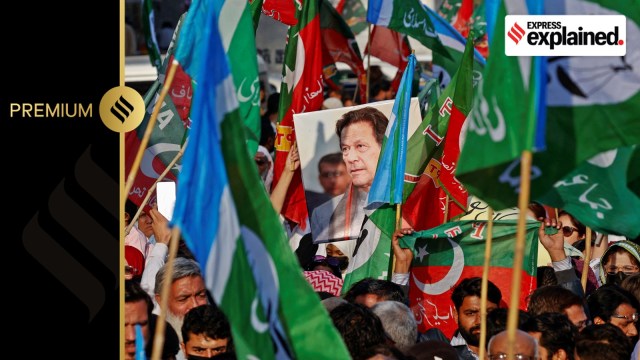PTI got more seats than the two main established parties, which have the backing of the Pakistan Army. Pakistan Muslim League (N) led by three-time Prime Minister Nawaz Sharif got 75 seats, while the Pakistan Peoples Party (PPP) led by the Bhutto-Zardari family got 54 seats, according to the final tally released by the Election Commission of Pakistan.

Independently, none of the three parties can prove a simple majority in the National Assembly when it is called in a few days.
Such an outcome poses a vexed question of whom does New Delhi talk to in Pakistan? It may be futile to engage with the civilian government. In realpolitik terms, this means the most effective person to talk to is Pakistan Army chief General Asim Munir — who wields influence over the political actors.
A new government in Delhi in May will have to take a long and hard look if it should continue with the doctrine of indifference or reopen channels of communication with the GHQ in Rawalpindi.
The final tally in Pakistan which was released on Sunday more than 60 hours after voting concluded in Thursday’s national elections has led to serious questions about the process and the allegation of its Army rigging the polls.
Now, a prime ministerial candidate has to show a simple majority of 169 seats in the National Assembly when the house is called in coming days.
Story continues below this ad
The Assembly consists of 336 seats of which 266 are decided through direct voting on polling day. Voting took place for 265 seats, as one could not be had due to death of a candidate. There are also 70 reserved seats – 60 for women and 10 for non-Muslims – allotted according to the strength of each party in the house to determine the final position of parties in the Assembly.
To form a government, a party must win 133 seats out of 265 contested seats in the National Assembly. The poll body has announced the results of 264 out of 265 directly-contested seats.
The result of one constituency was withheld by the ECP due to complaints of fraud and it would be announced after redressing the grievances of the aggrieved. Election to one seat was postponed after the death of a candidate.
So, what are key takeaways?
First, despite the people of Pakistan turning out in large numbers to vote against the Pakistan Army-backed Sharifs and the Bhutto-Zardaris and casting their “anti-establishment” vote against the Pakistan Army, the establishment has been able to manipulate the outcome in their favour.
Story continues below this ad
Second, the voting and the outcome in the provincial assemblies of Punjab, KPK, Sindh and Balochistan give a window to the outcome.
PTI and PMLN have been neck-to-neck in Punjab, which has more voters than the other three provinces put together — 7.32 cr out of 12.85 cr — and 141 of the 266 general seats in the National Assembly.
In KPK, Khan’s PTI — which had first time formed the government — has retained its dominance, while PPP has dominated the Sindh. Balochistan has seen a complete fractured outcome, split between PPP, PMLN, PTI, thereby not giving any party a clear mandate.
PTI, therefore, has managed to be the major player in the battleground province of Punjab, keep its dominance intact in KPK and marginal presence in Balochistan and Sindh. With this, it has challenged the established parties in their own turf, despite no level playing field — having lost the election symbol, the cricket bat, facing challenges in filing nominations, campaigning.
Story continues below this ad
Third, the fact that neither Sharif or Bhutto-Zardari have the required numbers on their own, and even brought together, they still fall short of the simple majority mark tells you that none of them have the political influence or the strength, like in the past — when PPP had the numbers in 2008, PMLN had the numbers in 2013.
Fourth, the lack of political power centre in the civilian structure, Pakistan Army now has the complete control and levers on each of the political actors. Having learnt their lessons from the past experiences — with Sharif challenging them in 2017-18 and Khan challenging them since last year — Rawalpindi has gotten smarter and doesn’t want to empower any of the civilian political leaders.








































